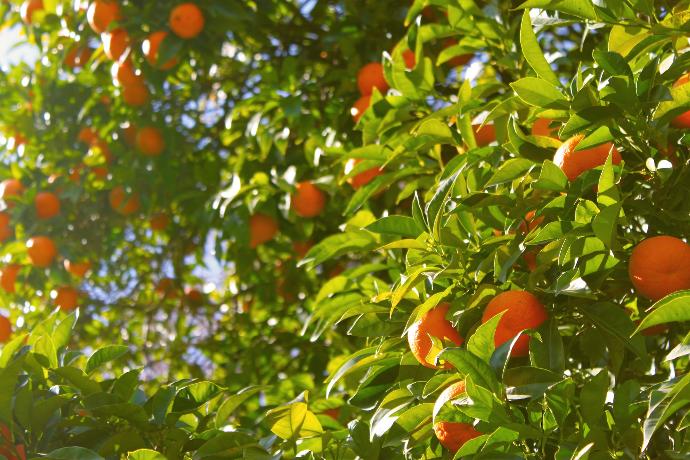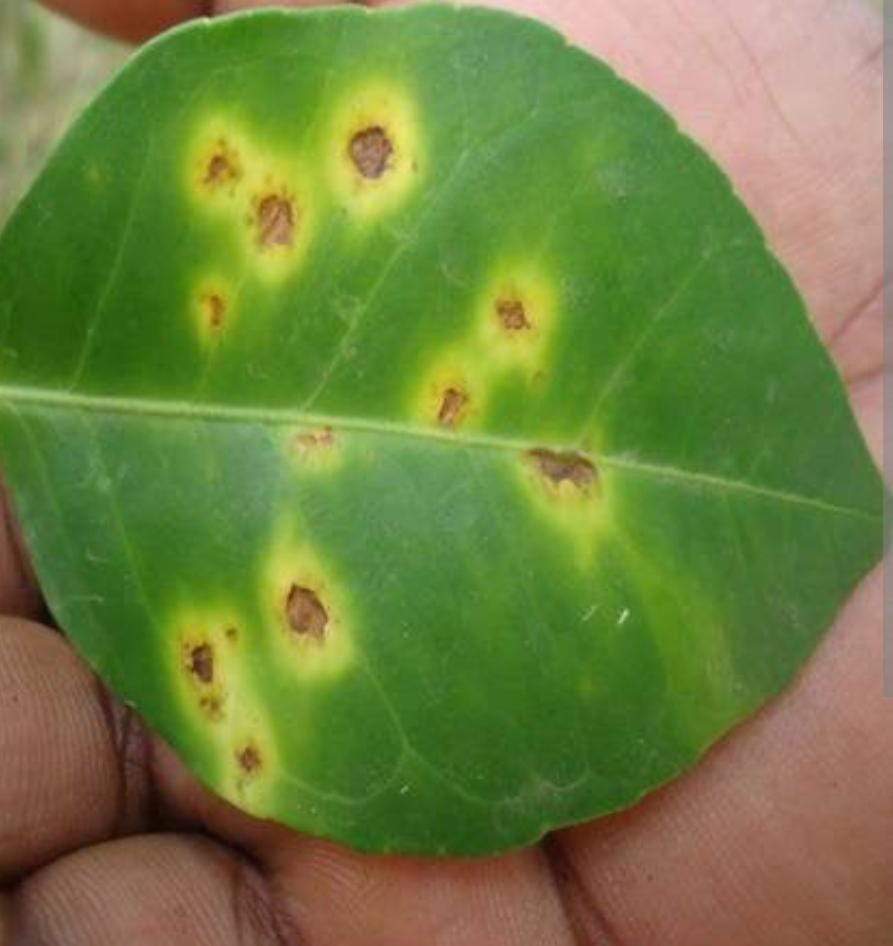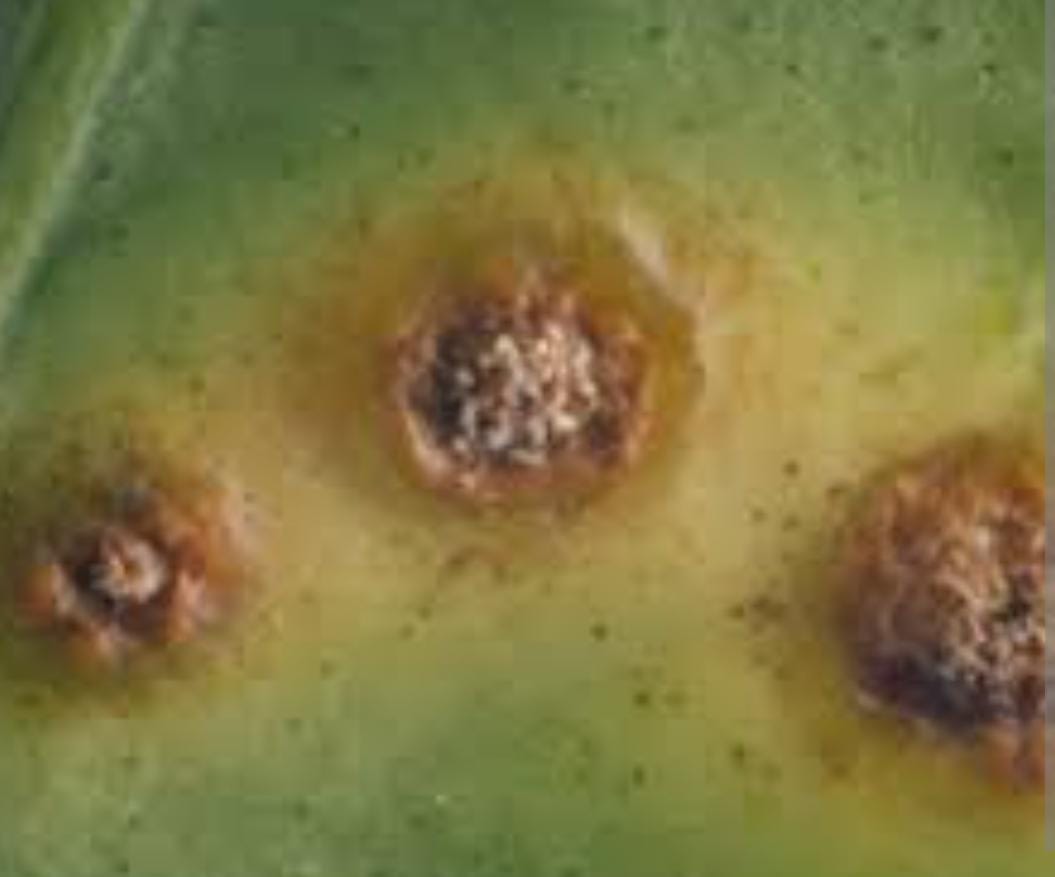Tangerine
Tangerine trees, 10-15 feet tall in Zones 9-11, exhibit fast growth in well-drained soil and full sun. Known for their sweet and citrusy fruits, tangerines are a popular choice for fresh consumption.

Habit
Tree
Height
2 to 3 m
Growth
Fast
Soil
Well-drained, Sandy Loam
Shade
Full Sun
Moisture
Moderate
Edible
Yes
Medicinal
Yes
Origin
Southeast Asia
Climatic Condition
Tropical, Subtropical
Temperature (°)
20°C to 30°C
Humidity (%)
60% to 80%
Potting media
50% Loam, 40% Sand, 10% Organic Matter
Fertilizers
Organic Fertilizer
Watering
Regular watering
Plant Weight
3 to 5 kg
Flowering Time
Winter to Spring
Soil Ph level
6.0 to 7.5
Water Ph level
6.0 to 7.0
Soil EC
0.5 to 1.0 mS/cm
Yield Per Plant
20 to 30 kg per plant
NPK ratio
20:10:10
life Span
10 to 20 years
Health Benefits
High in Vitamin C, Antioxidant
Suggested Grow Media or Potting Mix ?
40% compost, 30% peat moss, 30% perlite
Suggested Fertigation/Fertilizers
Fertilize every 2 weeks with a balanced, water-soluble fertilizer.
Common Diseases and Remedies
Canker , Pseudo cercospora leaf spot
Fruit become disfigured , red lesions on leaves
Proper sanitation , purning
HEALTH BENEFITS
· Boosts Immunity – High in vitamin C.
· Promotes Skin Health – Antioxidants prevent skin damage.
· Improves Digestion – Rich in fiber, preventing constipation.
· Regulates Blood Sugar – Helps in diabetes management.
What Is A Tangerine?
Mandarin orange is a citrus tree in the Rutaceae family, known for producing small, sweet, and easy-to-peel fruits known as mandarin oranges.
What Are The Different Types Of Tangerine?
Clementine:
Small, sweet, seedless, and easy to peel. It is usually harvested in late fall to early winter.
Satsuma:
Characterized by its loose skin and sweet, juicy flesh. Satsuma is cold hardy and can withstand cold temperatures.
Dancy:
Identifiable by its deep orange color and distinctive taste. The shell is thin and relatively easy to peel.
Honey Mandarin (Marcotte):
Sweet and juicy, with a slightly elongated shape. It is usually seedless and has a rich flavor.
Temple:
Larger than most mandarins, with a spicy-sweet flavor and deep orange color.
How Do You Care For Tangerine?
Location
Preferably, plant in a location that receives full sunlight for at least 6 to 8 hours per day.
Soil
Well-drained, slightly acidic soil is ideal. Enrich the soil with organic matter if necessary.
Hydration
Water regularly, especially during dry periods. Allow the soil to dry slightly between waterings.
Nourishment
Fertilize with a balanced fertilizer for citrus trees according to package directions.
Issues
Watch out for pests such as aphids, scale insects, and citrus leafminers. Protects from frost in cold climates.
What Are The Benefits Of The Tangerine?
Rich in vitamin C, antioxidants and fiber.
May boost the immune system and promote healthy skin.
Low calorie and perfect for hydration.
Easy to grow in the right climate, it is a rewarding variety for home gardeners.
FAQs About Growing Tangerine
Can tangerine plants tolerate low temperatures?
Some varieties, such as Satsuma, are cold tolerant and can withstand temperatures as low as -6°C.
How long does it take for a tangerine tree to bear fruit?
Depending on the variety and growing conditions, it may take 2 to 3 years or more for a tangerine tree to bear fruit.
Do tangerine trees need pruning?
Pruning helps shape the tree and improve air circulation, but is not necessary for fruit production. Trim dead or intersecting branches as needed.
Can tangerine trees be grown in pots?
Yes, tangerine trees can be grown in pots. However, make sure the pot is large enough to allow root growth and use well-drained soil.



